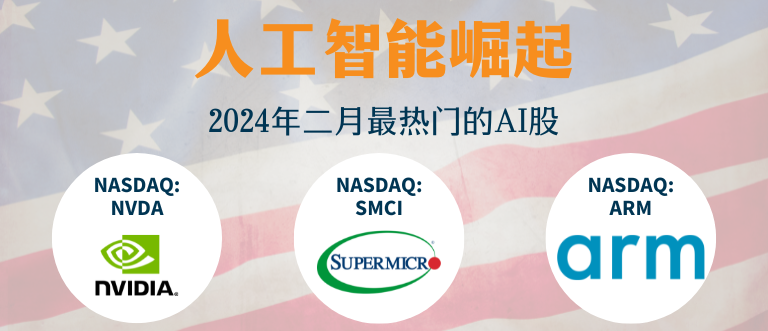Rand cost averaging
Table of Contents
Rand cost averaging
Among other risk-reduction techniques, investors should lessen the chance of purchasing assets at the top and (primarily due to emotional reasons) selling them at the bottom during these volatile times in the market. Investing in set amounts at regular times over an extended period is an excellent strategy for dispersing risk. Rand cost averaging (RCA) is the term used to describe this idea.
When using rand cost averaging, the number of units purchased fluctuates according to unit price, but the monthly investment amount stays constant.
What is rand cost averaging?
Rand cost averaging is a method of investing in which, independent of the state of the market at any given time, you make smaller, fixed investments at regular intervals (often monthly).
Unlike trying to time the market with a crystal ball, Rand cost averaging is a regular, long-term method to take advantage of the market’s ups and downs. This is not about tracking company performance and watching graphs.
The advantage of rand cost averaging is that it lessens the effect of one’s overall investment from short-term market volatility or ups and downs. During a market decline, you adhere to your investment plan, purchase more shares or units, and take advantage of the reduced pricing.
Understanding rand cost averaging
A methodical strategy for investing in rand cost averaging (RCA) seeks to lessen the effect of market volatility on your portfolio. By signing up with RCA, you promise to invest a certain sum of money at predetermined periods. Purchasing more shares or units at low prices and fewer shares or units at high prices is the fundamental tenet of the RCA concept.
This strategy differs from trying to time the market, which can be highly challenging. RCA is a variant of the more popular Dollar-Cost Averaging (DCA) approach. While DCA refers to investing a fixed sum in a foreign currency like the US dollar, RCA exclusively applies to investments made in South African rand.
Working of rand cost averaging
When attempting to time the market, Rand cost averaging helps reduce risk. You distribute your investment throughout various market conditions instead of making significant purchases during erratic times. Establishing a disciplined investing habit that can result in long-term financial success can be achieved by committing to invest a set amount at regular periods.
Consistent investing lowers the likelihood of rash judgments based on temporary market fluctuations. The power of compound interest can be harnessed over time by rand cost averaging, potentially leading to a significant wealth accumulation.
Effective strategy of rand cost averaging
Regardless of the state of the market, rand cost averaging is a successful investing technique that involves regular set contributions. For example, you allocate 2,000 Rand per month to a diverse investment portfolio. When asset values are lower during market downturns, your fixed sum purchases more units; on the other hand, you buy fewer units when prices are higher in bullish markets.
This tactic spreads the risk over time and reduces the effect of market volatility. It guarantees an affordable average purchase price in the long run. Rand cost averaging promotes disciplined investing, which is consistent with purchasing more at attractive prices. This could lead to a more seamless investing process and better portfolio performance.
Examples of rand cost averaging
The following example explains the concept of rand cost averaging. Suppose you decide to invest 1,000 Rand monthly in a stock. The stock is valued at 100 Rand per share in the first month, so you buy ten shares. The following month, the price drops to 80 Rand per share, allowing you to purchase 12.5 shares with your 1,000 Rand.
Over time, as the market fluctuates, your fixed investment amount consistently buys more shares when prices are low and fewer when prices are high. This averaging effect helps mitigate the impact of short-term market volatility, potentially resulting in a more balanced and cost-effective long-term investment strategy.
Frequently Asked Questions
To employ Rand Cost Averaging, consistently invest a fixed amount of money in a chosen asset at regular intervals, regardless of market fluctuations. This strategy reduces the impact of market volatility, enabling you to buy more shares when prices are low and fewer when prices are high, ultimately averaging the overall cost of your investment.
When investing, Rand Cost Averaging is essential for reducing the impact of market swings. Investors can minimise the overall influence of market volatility on their investment returns by routinely investing a preset amount in a selected asset. This allows investors to purchase more units during periods of low price and fewer units during periods of high cost.
Rand Cost Averaging helps mitigate the impact of market fluctuations by investing a fixed amount in a particular asset at regular intervals. This strategy can provide some protection against market volatility and reduce the risk of making significant investments at unfavourable price points, contributing to a more stable investment over time.
With Dollar Cost Averaging, an investor makes consistent fixed contributions to an investment independent of the asset’s price. Buying more shares at low prices and fewer at high prices helps mitigate the effects of market volatility. By using this disciplined strategy, investors may reduce the emotional effect of short-term price changes and avoid the traps of attempting to predict the market. A better balanced, less hazardous investment portfolio and a decreased average cost per share are possible long-term outcomes of dollar-cost averaging.
Dollar Cost Averaging involves regularly investing a fixed amount in a financial instrument, buying more shares when prices are low and fewer when prices are high. Rand Cost Averaging is similar but specific to the South African Rand, where investors invest a fixed amount in a chosen investment, adjusting for currency fluctuations. Both aim to reduce the impact of market volatility on overall investment returns.
Related Terms
Most Popular Terms
Other Terms
- Options expiry
- Adjusted distributed income
- International securities exchanges
- Settlement currency
- Federal funds rate
- Active Tranche
- Convertible Securities
- Synthetic ETF
- Physical ETF
- Initial Public Offering
- Buyback
- Secondary Sharing
- Bookrunner
- Notional amount
- Negative convexity
- Jumbo pools
- Inverse floater
- Forward Swap
- Underwriting risk
- Reinvestment risk
- Final Maturity Date
- Payment Date
- Secondary Market
- Margin Requirement
- Mark-to-market
- Pledged Asset
- Yield Pickup
- Subordinated Debt
- Trailing Stops
- Treasury Stock Method
- Stochastic Oscillator
- Bullet Bonds
- Basket Trade
- Contrarian Strategy
- Exchange Control
- Notional Value
- Relevant Cost
- Dow Theory
- Speculation
- Stub
- Trading Volume
- Going Long
- Pink sheet stocks
- Sustainable investment
- Stop-limit sell order
- Economic Bubble
- Ask Price
- Constant prepayment rate
- Covenants
- Stock symbol
Know More about
Tools/Educational Resources
Markets Offered by POEMS
Read the Latest Market Journal

本文旨在为中级外汇交易者提供必要的信息和知识。它将涵盖我们上一篇文章 “五分钟看懂世界上最活跃的市场-外汇差价合约(FX CFD)...

解锁台湾股市的投资潜力!深入了解由强大的技术驱动型经济推动的股票市场,2023 年机械和电气设备将占出口的 69%。在政治稳定、投资者友好的法规和健全的法律框架下,探索台积电和富士康等全球顶级企业。台湾股市值得称赞的历史表现和在国际贸易中的的重要性使其更具吸引力。在这个科技实力雄厚、经济稳定、充满活力的股票市场中,抓住增长机遇!

了解外汇市场 外汇交易市场又称外汇市场,是一个买卖货币的全球性金融市场。它是全世界规模最大、流动性最强的金融市场,每日交易量超过 6 万亿美元。但外汇市场有一个重要却常被忽视的一点,就是它受交易心理的影响。在本文中,我们将探讨外汇市场的复杂性,还有把重点放在交易心理与传统交易策略共同发挥的关键作用...

五分钟看懂世界上最活跃的市场 -外汇差价合约(FX CFD)
外汇交易市场俗称外汇或外汇市场,是全球金融市场的支柱。它是世界上最活跃的市场,2022 年 4 月,全球交易额达到创纪录的每天 7.5 万亿美元[1] 。这个活跃的市场为交易者提供了利用货币价格波动赚取利润的机会。在本文中,我们将解释外汇市场的基本原理,助您了解其投资机制。 什么是外汇? 外汇市场是一个分散的全球市场,世界上所有货币都在这里进行交易...

随着通胀数据趋向 2% 的理想目标,人们普遍乐观地认为,在任何可能的降息之前,市场都不会受到不利影响。以下是美股市场2024年的一些重要事件,投资者在做出投资决策时可以参考留意。

根据《东南亚态势报告:2023》,失业和经济衰退是当前东南亚面临的主要挑战。各国采取了各种政策和措施以恢复经济,尽力摆脱新冠疫情的影响。尽管如此,越南在经济和社会方面展现出了令人满意的复苏迹象,经济增长逐季上升,成为世界经济的亮点之一。虽然全年GDP增速放缓至5.05%,低于政府6.5%的目标,但越南仍然是地区和世界经济增速较快的国家之一。






















